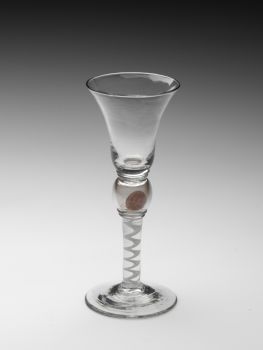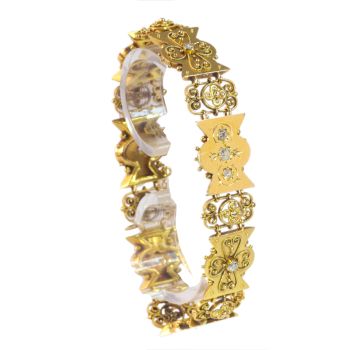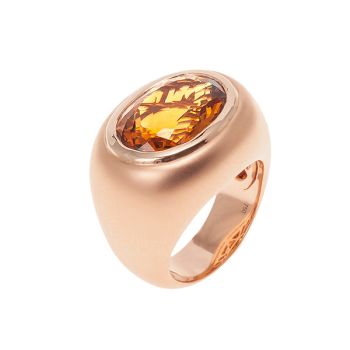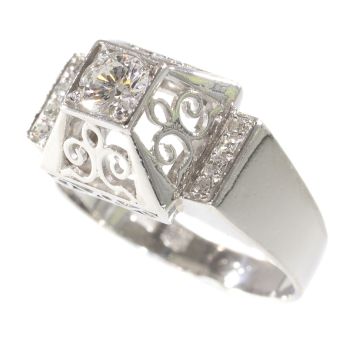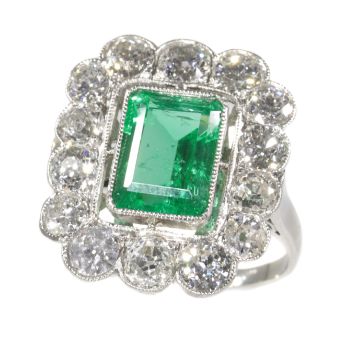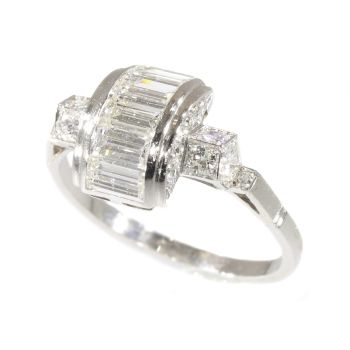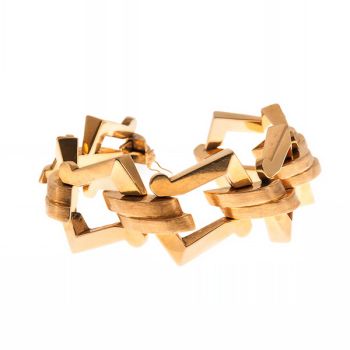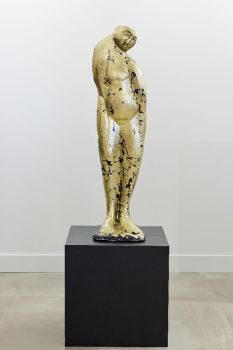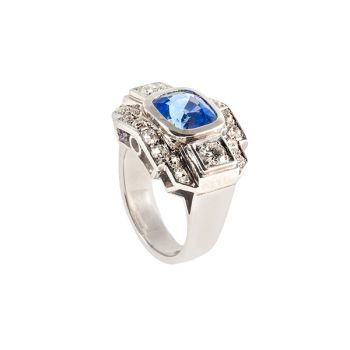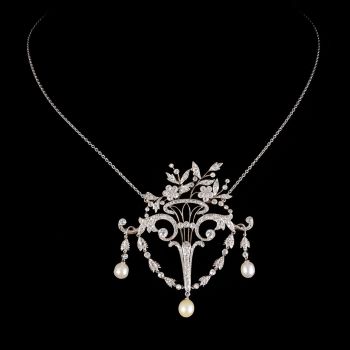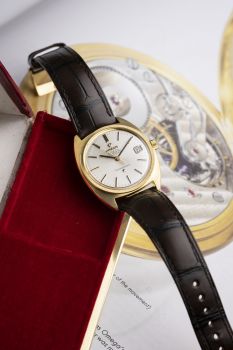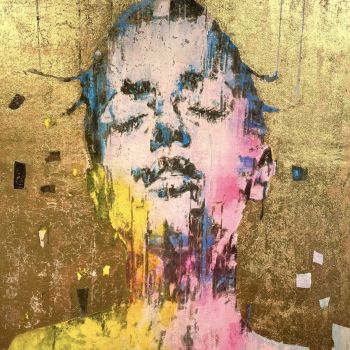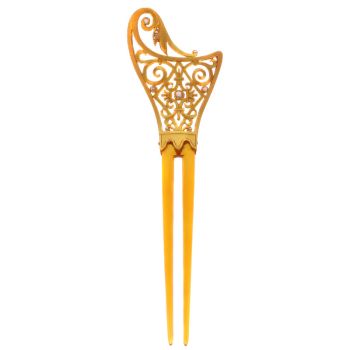Anello antico in oro con spazio nascosto e capelli intrecciati 1850
Artista Sconosciuto
Oro
€ 1.750
Adin Fine Antique Jewellery
- A proposito di opere d'arte
Antique jewelry object group: ring
Condition: excellent condition
- (more info on our condition scale)
Country of origin:Although it does not carry any legible control marks we believe this to be of Belgian origin.
Style: Victorian - Victorian decorative arts refers to the style of decorative arts during the Victorian era. The Victorian era is known for its eclectic revival and interpretation of historic styles and the introduction of cross-cultural influences from themiddle east and Asia in furniture, fittings, and Interior decoration. Victorian design is widely viewed as having indulged in a regrettable excess of ornament. The Arts and Crafts movement, the aesthetic movement, Anglo-Japanese style, and Art Nouveaustyle have their beginnings in the late Victorian era.
- See also: Victorianor more info on styles
Style specifics: The Romantic Victorian Period - Experts divide the reign of Queen Victoria, also called The Victorian era (1837 - 1901) in to three periods of about twenty years each; The Romantic Victorian Period (1837 - 1860), The Grand Victorian Period (1860 -1880), and the Late or Aesthetic Victorian Period (1880 - 1901).
We consider this to be of the Romantic Victorian Period. This period covers the coronation of Victoria as Queen of Great Britain and Ireland, and her marriage to King Albert and their love, their devotion to their marriage and to their country are thesources of inspiration for this period. The jewels of this period are made of intricate carvings, special techniques where the enamel is subtly worked. These techniques allowed to give the jewel a certain opulence with less precious metal needed. Asprecious metals were really rare at that time. Highly favored (semi-) precious stones in this period are amethyst, coral, garnets, seed pearls and turquoises. The connotation is obviously sentimental, symbolic and romantic with reminiscent Gotic and/orRenaissance patterns and an abundant use of motifs like anchors, birds, branches, crosses, hearts and snakes.
Period: ca. 1850
- (events & facts of this era, poetry of this era, fashion of this era)
Source of inspiration: Romanticism
Material: 18K yellow gold
- (more info on precious metals)
Extra information: Hair jewelry - Between the mid 18th century (circa 1750) and about 1870, it was possible for a woman to sell her hair on special markets. The hair was bought by hair dealers who supplied it to special hair craftsmen. At a certain moment this typet ofjewelry became such a fashion, that wealthy women started haircraft as a hobby. In fashion magazines of that time, you could find complete descriptions of the way to turn hair into little pieces of art.
Hidden symbolism - Many pieces of jewelry from the 19th century and before are characterized by the use of symbolism. Sometimes this symbolism is obvious but many a time it is hidden. Hidden in shapes, themes, ornaments and/or use of stones. We are notsure but we think that these earrings have some hidden symbolism too. The belt and the screw could point at "attachment" and the use of the blueish/greenish turquoise often refers to the flower "forget-me-not". So maybe we have some Victorian"love-message" earrings here?
Hallmarks: No trace.
- (more info on hallmarks)
Dimensions: width 0,53 cm (0,21 inch)
Weight: 3,30 gram (2,12 dwt)
Ring size Continental: 55 & 17½ , Size US 7¼ , Size UK: O
Resizing: This ring cannot be resized because of the way it is made.
- (more info on ring sizes)
Reference Nº: 18058-0235
Copyright photography: Adin, fine antique jewelry
- A proposito di opere artista
Può succedere che un artista o un creatore sia sconosciuto.
Alcune opere non sono determinate da chi sono state realizzate o sono state realizzate da (un gruppo di) artigiani. Esempi sono statue dell'antichità, mobili, specchi o firme non chiare o leggibili ma anche alcune opere non sono affatto firmate.
Inoltre puoi trovare la seguente descrizione:
•"Attribuito a …." A loro avviso probabilmente opera dell'artista, almeno in parte
•“Studio di ….” o “Officina di” A loro avviso un'opera eseguita nello studio o nella bottega dell'artista, eventualmente sotto la sua supervisione
•“Cerchio di…” A loro avviso un'opera del periodo dell'artista che mostra la sua influenza, strettamente legata all'artista ma non necessariamente al suo allievo
•"Stile di..." o "Seguace di..." A loro avviso un'opera eseguita nello stile dell'artista ma non necessariamente da un allievo; può essere contemporaneo o quasi contemporaneo
•“Modalità di…” A loro avviso un'opera nello stile dell'artista ma di epoca successiva
•"Dopo …." A loro avviso una copia (di qualsiasi data) di un'opera dell'artista
•“Firmato…”, “Datato…” o “Iscritto” A loro avviso l'opera è stata firmata/datata/inscritta dall'artista. L'aggiunta di un punto interrogativo indica un elemento di dubbio
•"Con firma....", "Con data...", "Con iscrizione..." o “Riporta firma/data/iscrizione” a loro avviso la firma/data/iscrizione è stata aggiunta da qualcuno diverso dall'artista
Sei interessato ad acquistare questa opera d'arte?
Artwork details
Related artworks
- 1 - 4 / 12
- 1 - 4 / 24
- 1 - 4 / 24
Onbekende Kunstenaar
Retro ring in platina bezet met diamanten en een saffier1940 - 1950
Prijs op aanvraagLyppens Juweliers
Fontana
Flower basket brooch-pendant1900 - 1905
Prijs op aanvraagAns Hemke-Kuilboer Juwelier & Antiquair
1 - 4 / 24- 1 - 4 / 12















